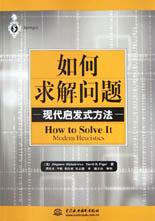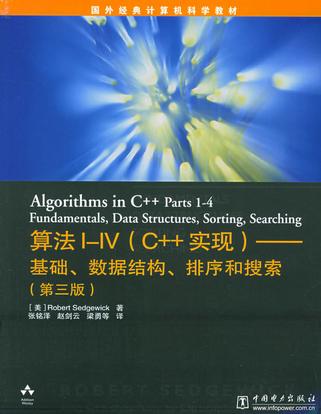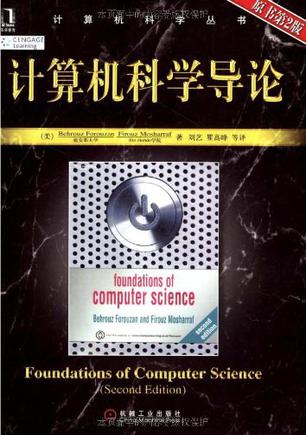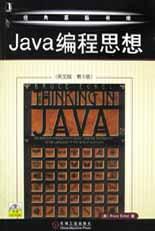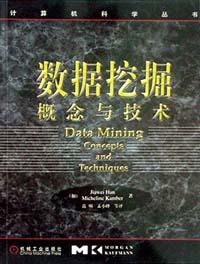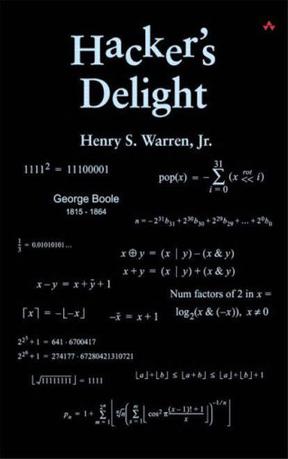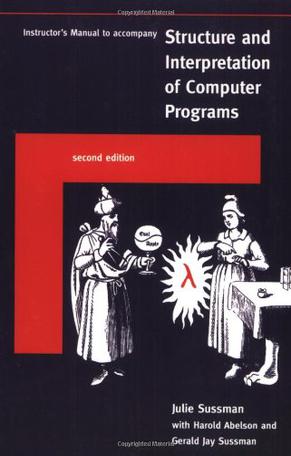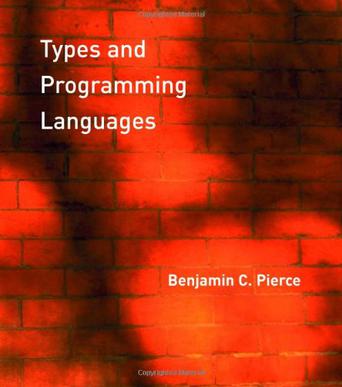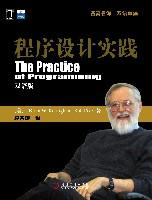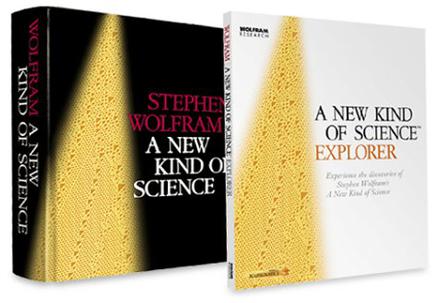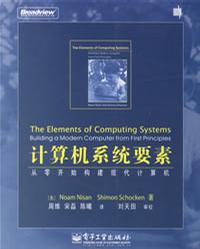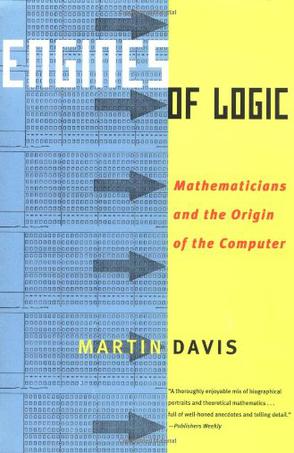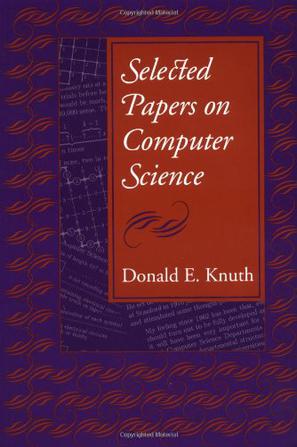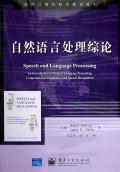欢迎来到相识电子书!
标签:计算机科学
-
如何求解问题
《如何求解问题:现代启发式方法》通过一系列贯穿于章节间的有趣难题,《如何求解问题:现代启发式方法》深入浅出地阐述了如何利用计算机来求解问题的一些现代启发式方法。全书包括两部分,共分15章。 -
可变目标C编译器
本书系统地介绍了可变目标ANSIC编译器1cc的设计方法和实现技术。1cc是一个实用的编译器,能够不同的目标机器生成代码。本书结合1cc的具体实现,详细讲术了存储管理、符号表、词法分析、语法分析、中间代码生成、优化、目标代码产生等编译程序的各个部分。全书共分19章,在各章之后均附有练习。 与其他介绍编译技术的教材相比,本书特色鲜明,实用性强,适合作为高等院校计算机专业的编译原理课程的教材或参考书,对从事编译相关工作的技术人员也有很好的参考价值。 -
算法I~IV(C++实现)――基础、数据结构、排序和搜索(第三版)
Robert Sedgewick完全重写了他的著作,对它进行了充分的扩展和更新,涵盖了目前重要的算法和数据结构。Christopher Van Wyk和Sedgewick开发的新实现采用的是C++语言,这种实现不仅能够直接地表达算法,而且给编程者提供了实践的方法,以便在真正的应用中测试这些算法。 新的版本提供了很多新算法,而且对每个算法的解释也比以前的版本详细很多。新的版面设计以及详细、富有创意并且具有注释的插图,使本书的表达能力大大地提高了。第三版保留了将理论和实践成功混合在一些的特点,正是这一点,使Sedgewick的著作成为25万多名程序员无价的参考资源。 本书是全卷的前半部分,涵盖了基本的数据结构、排序算法、搜索算法以及它们的相关应用。虽然本书实质上可以用于各种语言的程序设计,Christopher Van Wyk和Sedgewick的实现都采用了C++类和ADT实现的自然对应。 -
计算机科学导论
本书是大学计算机相关专业的基础课教材,涉及到计算机科学的各个方面。本书着重讲解基本概念而不是数学模型和技术细节,通过大量的图表和演示范例讲解计算机科学的基础知识;每章后面的关键术语、小结和练习有助于读者掌握和复习知识要点。 本书既适合当作大专院校的计算机基础课教材,也可作为一般的计算机基础入门读物。 -
Java编程思想
本书赢得了全球程序员的广泛赞誉,即使是最晦涩的概念,在Bruce Eckel的文字亲和力和小而直接的编程示例面前也会化解于无形。从Java的基础语法到最高级特性,本书能逐步指导你轻松掌握。 本书经典的Java介绍,完全针对Java1.4版本更新,并增加了许多新主题。350多个可运行的Java程序,15000多行代码。讲述Java的同时着得阐释面向对象原理。支持网站包括所有源代码、带注释的解决方案指南、评论以及其他资源。随书光盘包括可用于Windows、Linux和Mac的完整的Fundations for Java多媒体研讨教材。本书的全面性,适用于初学者;本书的深入性,适用于专家。随书光盘含有15个小时的Bruce Eckel演讲课程。 -
数据挖掘
这本书系统地论述数据挖掘的基本概念、基本技术和最新进展。全书分10章,全面而深入地介绍数据库技术的发展和数据挖掘的应用,数据仓库和联机分析技术,数据预处理技术(数据清理、数据集成和转换、数据归约),数据挖掘技术(数据的分类、预测、关联和聚类),先进数据库系统中的数据挖掘方法,以及数据挖掘的应用和一些具有挑战性的问题。书中注重实效,在讨论概念与技术时辅以实例,并提供代表性算法。 -
C Interfaces and Implementations
Every programmer and software project manager must master the art of creating reusable software modules; they are the building blocks of large, reliable applications. Unlike some modern object-oriented languages, C provides little linguistic support or motivation for creating reusable application programming interfaces (APIs). While most C programmers use APIs and the libraries that implement them in almost every application they write, relatively few programmers create and disseminate new, widely applicable APIs. C Interfaces and Implementations shows how to create reusable APIs using interface-based design, a language-independent methodology that separates interfaces from their implementations. This methodology is explained by example. The author describes in detail 24 interfaces and their implementations, providing the reader with a thorough understanding of this design approach. -
Hacker's Delight
A collection useful programming advice the author has collected over the years; small algorithms that make the programmer's task easier. * At long last, proven short-cuts to mastering difficult aspects of computer programming * Learn to program at a more advanced level than is generally taught in schools and training courses, and much more advanced than can be learned through individual study/experience. * An instant cult classic for programmers! Computer programmers are often referred to as hackers -- solitary problem solvers engrossed in a world of code as they seek elegant solutions to building better software. While many view these unique individuals as "madmen," the truth is that much of the computer programmer's job involves a healthy mix of arithmetic and logic. In Hacker's Delight, veteran programmer Hank Warren shares the collected wisdom -- namely tips and tricks -- from his considerable experience in the world of application development. The resulting work is an irresistible collection that will help even the most seasoned programmers better their craft. Henry S. Warren Jr. has had a 40-year career with IBM, spanning the computer field from the IBM 704 to PowerPC. He has worked on various military command and control systems, and on the SETL project under Jack Schwartz at NYU. Since 1973 he has been in IBM's Research Division at Yorktown Heights, New York. Here he has done compiler and computer architecture work on the 801 computer and its several variants through PowerPC. Presently he is working on the Blue Gene petaflop computer project. He received his Ph.D. in Computer Science from the Courant Institute at New York University in 1980. -
Instructor's Manual t/a Structure and Interpretation of Computer Programs
This instructor's manual and reader's guide accompanies the second edition of Structure and Interpretation of Computer Programs, by Harold Abelson and Gerald Jay Sussman with Julie Sussman. It contains discussions of exercises and other material in the text as well as supplementary material, additional examples and exercises, and teaching suggestions. An appendix summarizes the Scheme programming language as used in the text, showing at what point in the text each element of Scheme is introduced. -
Compiling with Continuations
This book shows how continuation-passing style is used as an intermediate representation to perform optimizations and program transformations. Continuations can be used to compile most programming languages. The method is illustrated in a compiler for the programming language Standard ML. Prior knowledge of ML, however, is not necessary, as the author carefully explains each concept as it arises. This is the first book to show how concepts from the theory of programming languages can be applied to the production of practical optimizing compilers for modern languages like ML. All the details of compiling are covered, including the interface to a runtime system and garbage collector. -
Types and Programming Languages
A type system is a syntactic method for automatically checking the absence of certain erroneous behaviors by classifying program phrases according to the kinds of values they compute. The study of type systems--and of programming languages from a type-theoretic perspective -- -has important applications in software engineering, language design, high-performance compilers, and security.This text provides a comprehensive introduction both to type systems in computer science and to the basic theory of programming languages. The approach is pragmatic and operational; each new concept is motivated by programming examples and the more theoretical sections are driven by the needs of implementations. Each chapter is accompanied by numerous exercises and solutions, as well as a running implementation, available via the Web. Dependencies between chapters are explicitly identified, allowing readers to choose a variety of paths through the material.The core topics include the untyped lambda-calculus, simple type systems, type reconstruction, universal and existential polymorphism, subtyping, bounded quantification, recursive types, kinds, and type operators. Extended case studies develop a variety of approaches to modeling the features of object-oriented languages. -
The Seasoned Schemer
drawings by Duane Bibbyforeword and afterword by Guy L. Steele Jr.The notion that "thinking about computing is one of the most exciting things the human mind can do" sets both The Little Schemer (formerly known as The Little LISPer) and its new companion volume, The Seasoned Schemer, apart from other books on LISP. The authors' enthusiasm for their subject is compelling as they present abstract concepts in a humorous and easy-to-grasp fashion. Together, these books will open new doors of thought to anyone who wants to find out what computing is really about. The Little Schemer introduces computing as an extension of arithmetic and algebra;things that everyone studies in grade school and high school. It introduces programs as recursive functions and briefly discusses the limits of what computers can do. The authors use the programming language Scheme, and interesting foods to illustrate these abstract ideas. The Seasoned Schemer informs the reader about additional dimensions of computing: functions as values, change of state, and exceptional cases. The Little LISPer has been a popular introduction to LISP for many years. It had appeared in French and Japanese. The Little Schemer and The SeasonedSchemer are worthy successors and will prove equally popular as textbooks for Scheme courses as well as companion texts for any complete introductory course in Computer Science. -
程序设计实践
从排错、测试、性能、可移植性、设计、界面、风格和记法等方面,讨论了程序设计中实际的、又是非常深刻和具有广泛意义的思想、技术和方法,它的翻译出版将填补国内目前这方面书籍的空白。《程序设计实践》(双语版)值得每个梦想并努力使自己成为优秀程序员的人参考,值得每个计算机专业的学生和计算机工作者阅读,也可作为程序设计高级课程的教材或参考书。 -
计算机系统要素
本书通过展现简单但功能强大的计算机系统之构建过程,为读者呈现了一幅完整、严格的计算机应用科学大图景。本书作者认为,理解计算机工作原理的最好方法就是亲自动手,从零开始构建计算机系统。 通过12个章节和项目来引领读者从头开始,本书逐步地构建一个基本的硬件平台和现代软件阶层体系。在这个过程中,读者能够获得关于硬件体系结构、操作系统、编程语言、编译器、数据结构、算法以及软件工程的详实知识。通过这种逐步构造的方法,本书揭示了计算机科学知识中的重要成分,并展示其它课程中所介绍的理论和应用技术如何融入这幅全局大图景当中去。全书基于“先抽象再实现”的阐述模式,每一章都介绍一个关键的硬件或软件抽象,一种实现方式以及一个实际的项目。完成这些项目所必要的计算机科学知识在本书中都有涵盖,只要求读者具备程序设计经验。本书配套的支持网站提供了书中描述的用于构建所有硬件和软件系统所必需的工具和资料,以及用于12个项目的200个测试程序。 全书内容广泛、涉猎全面,适合计算机及相关专业本科生、研究生、技术开发人员、教师以及技术爱好者参考和学习。 -
Engines of Logic
Computers are ubiquitous yet to many they remain objects of irreducible mystery. This text looks at the question of how today's computers can perform such a variety of tasks if computing is just glorified arithmetic. The author illustrates how the answer lies in the fact that computers are essentially engines of logic and that their hardware and software embody concepts developed over centuries by logicians. "Engines of Logic" gives the reader a clear explanation of how and why computers work. -
The Art of the Metaobject Protocol
The CLOS metaobject protocol is an elegant, high-performance extension to the CommonLisp Object System. The authors, who developed the metaobject protocol and who were among the group that developed CLOS, introduce this new approach to programming language design, describe its evolution and design principles, and present a formal specification of a metaobject protocol for CLOS.Kiczales, des Rivieres, and Bobrow show that the "art of metaobject protocol design" lies in creating a synthetic combination of object-oriented and reflective techniques that can be applied under existing software engineering considerations to yield a new approach to programming language design that meets a broad set of design criteria.One of the major benefits of including the metaobject protocol in programming languages is that it allows users to adjust the language to better suit their needs. Metaobject protocols also disprove the adage that adding more flexibility to a programming language reduces its performance. In presenting the principles of metaobject protocols, the authors work with actual code for a simplified implementation of CLOS and its metaobject protocol, providing an opportunity for the reader to gain hands-on experience with the design process. They also include a number of exercises that address important concerns and open issues.Gregor Kiczales and Jim des Rivieres, are Members of the Research Staff, and Daniel Bobrow is a Research Fellow, in the System Sciences Laboratory at Xerox Palo Alto Research Center. -
自然语言处理综论
本书是一本全面系统地讲述计算机自然语言处理的优秀教材。本书英文版出版之后好评如潮,国外许多著名大学纷纷把本书选为自然语言处理和计算语言学课程的主要教材,该书被誉为该领域教材的“黄金标准”。本书包含的内容十分丰富,分为四个部分,共21章,深入细致地探讨了计算机处理自然语言的词汇、句法、语义、语用等各个方面的问题,介绍了自然语言处理的各种现代技术。从层次的角度看,本书的论述是按照自然语言的不同层面逐步展开的,首先论述单词的自动形态分析,接着论述自动句法分析,然后论述各种语言单位的自动语义分析,最后论述连贯文本的自动分析、对话与会话的智能代理以及自然语言生成。从技术的角度看,本书介绍了正则表达式、有限状态自动机、文本-语音转换、发音与拼写的概率模型、词类自动标注、N元语法、隐马尔可夫模型、上下文无关语法、特征与合一、词汇化剖析与概率剖析、一阶谓词演算、词义排歧、修辞结构理论、机器翻译等非常广泛的内容。本书具有“覆盖全面、注重实用、强调评测、语料为本”四大特色。在本书的配套网站上,还提供了相关的资源和工具,便于读者在实践中进一步提高。 ------- 目录 第1章 导论 1.1 语音与语言处理中的知识 1.2 歧义 1.3 模型和算法 1.4 语言. 思维和理解 1.5 学科现状与近期发展 1.6 语音和语言处理简史 1.6.1 基础研究:20世纪40年代和20世纪50年代 1.6.2 两个阵营:1957年至1970年 1.6.3 四个范型:1970年至1983年 1.6.4 经验主义和有限状态模型的复苏:1983年至1993年 1.6.5 不同领域的合流:1994年至1999年 1.6.6 多重发现 1.6.7 心理学的简要注记 1.7 小结 1.8 文献和历史说明 第一部分 词汇的计算机处理 第2章 正则表达式与自动机 2.1 正则表达式 2.1.1 基本正则表达式模式 2.1.2 析取. 组合与优先关系 2.1.3 一个简单的例子 2.1.4 一个比较复杂的例子 2.1.5 高级算符 2.1.6 正则表达式中的替换. 存储器与ELIZA 2.2 有限状态自动机 2.2.1 用FSA来识别羊的语言 2.2.2 形式语言 2.2.3 另外的例子 2.2.4 非确定FSA 2.2.5 使用NFSA接收符号串 2.2.6 识别就是搜索 2.2.7 确定自动机与非确定自动机的关系 2.3 正则语言与FSA 2.4 小结 2.5 文献和历史说明 第3章 形态学与有限状态转录机 3.1 英语形态学概观 3.1.1 屈折形态学 3.1.2 派生形态学 3.2 有限状态形态剖析 3.2.1 词表和形态顺序规则 3.2.2 用有限状态转录机进行形态剖析 3.2.3 正词法规则和有限状态转录机 3.3 把FST词表与规则相结合 3.4 与词表无关的FST:PORTER词干处理器 3.5 人是怎样进行形态处理的 3.6 小结 3.7 文献和历史说明 第4章 计算音系学与文本-语音转换 4.1 言语语音与语音标音法 4.1.1 发音器官 4.1.2 辅音:发音部位 4.1.3 辅音:发音方法 4.1.4 元音 4.1.5 音节 4.2 音位和音位规则 4.3 音位规则和转录机 4.4 计算音系学中的一些高级问题 4.4.1 元音和谐 4.4.2 模板式形态学 4.4.3 优选理论 4.5 音位规则的机器学习 4.6 TTS中从文本映射到语音 4.6.1 发音词典 4.6.2 词典之外的查找:文本分析 4.6.3 基于有限状态转录机(FST)的发音词典 4.7 文本-语音转换中的韵律 4.7.1 韵律的音系学性质 4.7.2 韵律的语音和声学性质 4.7.3 语音合成中的韵律 4.8 人处理音位和形态的过程 4.9 小结 4.10 文献和历史说明 第5章 发音与拼写的概率模型 5.1 关于拼写错误 5.2 拼写错误模式 5.3 非词错误的检查 5.4 概率模型 5.5 把贝叶斯方法应用于拼写 5.6 最小编辑距离 5.7 英语的发音变异 5.8 发音问题研究中的贝叶斯方法 5.8.1 发音变异的决策树模型 5.9 加权自动机 5.9.1 从加权自动机计算似然度:向前算法 5.9.2 解码:Viterbi算法 5.9.3 加权自动机和切分 5.9.4 用切分来进行词表的自动归纳 5.10 人类发音研究 5.11 小结 5.12 文献和历史说明 第6章 N元语法 6.1 语料库中单词数目的计算 6.2 简单的(非平滑的)N元语法 6.2.1 N元语法及其对训练语料库的敏感性 6.3 平滑 6.3.1 加1平滑 6.3.2 Witten-Bell打折法 6.3.3 Good-Turing打折法 6.4 回退 6.4.1 回退与打折相结合 6.5 删除插值法 6.6 拼写和发音的N元语法 6.6.1 上下文有关的错拼更正 6.6.2 发音模型的N元语法 6.7 熵 6.7.1 用于比较模型的交叉熵 6.7.2 英语的熵 6.8 小结 6.9 文献和历史说明 第7章 HMM与语音识别 7.1 语音识别的总体结构 7.2 隐马尔可夫模型概述 7.3 再谈Viterbi算法 7.4 先进的解码方法 7.4.1 A*解码算法 7.5 语音的声学处理 7.5.1 声波 7.5.2 怎样解释波形 7.5.3 声谱 7.5.4 特征抽取 7.6 声学概率的计算 7.7 语音识别系统的训练 7.8 用于语音合成的波形生成 7.8.1 音高和音延的修正 7.8.2 单元选择 7.9 人的语音识别 7.10 小结 7.11 文献和历史说明 第二部分 句法的计算机处理 第8章 词的分类与词类标注 8.1 大多数英语词的分类 8.2 英语的标记集 8.3 词类标注 8.4 基于规则的词类标注 8.5 随机词类标注 8.5.1 说明问题的一个例子 8.5.2 实际的HMM标注算法 8.6 基于转换的标注 8.6.1 怎样应用TBL规则 8.6.2 怎样学习TBL规则 8.7 其他问题 8.7.1 多重标记和多项词 8.7.2 未知词 8.7.3 基于类的N元语法 8.8 小结 8.9 文献和历史说明 第9章 英语的上下文无关语法 9.1 组成性 9.2 上下文无关规则和树 9.3 句子级的结构 9.4 名词短语 9.4.1 在中心名词前的成分 9.4.2 名词后的成分 9.5 并列关系 9.6 一致关系 9.7 动词短语和次范畴化 9.8 助动词 9.9 口语的句法 9.9.1 不流畅现象 9.10 语法等价与范式 9.11 有限状态语法和上下文无关语法 9.12 语法和人的语言处理 9.13 小结 9.14 文献和历史说明 第10章 基于上下文无关语法的剖析 10.1 剖析就是搜索 10.1.1 自顶向下剖析 10.1.2 自底向上剖析 10.1.3 自顶向下剖析与自底向上剖析的对比 10.2 基本的自顶向下剖析 10.2.1 增加自底向上过滤 10.3 基本的自顶向下剖析的问题 10.3.1 左递归 10.3.2 歧义 10.3.3 子树的重复剖析 10.4 Earley算法 10.4.1 预测 10.4.2 扫描 10.4.3 完成 10.4.4 示例 10.4.5 从线图中检索剖析树 10.5 有限状态剖析方法 10.6 小结 10.7 文献和历史说明 第11章 特征与合一 11.1 特征结构 11.2 特征结构的合一 11.3 语法中的特征结构 11.3.1 一致关系 11.3.2 中心语特征 11.3.3 次范畴化 11.3.4 其他词类的次范畴化 11.3.5 长距离依存关系 11.4 合一的实现 11.4.1 合一的数据结构 11.4.2 合一算法 11.5 带有合一约束的剖析 11.5.1 把合一结合到Earley剖析器中 11.5.2 复制的必要性 11.5.3 合一剖析 11.6 类型与继承 11.6.1 类型的扩充 11.6.2 合一的其他扩充 11.7 小结 11.8 文献和历史说明 第12章 词汇化剖析与概率剖析 12.1 概率上下文无关语法 12.1.1 PCFG的概率CYK剖析 12.1.2 PCFG概率的学习 12.2 PCFG的问题 12.3 概率词汇化的CFG 12.4 依存语法 12.4.1 范畴语法 12.5 人的剖析 12.6 小结 12.7 文献和历史说明 第13章 语言的复杂性 13.1 Chomsky层级 13.2 怎么判断一种语言不是正则的 13.2.1 抽吸引理 13.2.2 英语和其他自然语言是正则语言吗 13.3 自然语言是上下文无关的吗 13.4 计算复杂性和人的语言处理 13.5 小结 13.6 文献和历史说明 第三部分 语义的计算机处理 第14章 意义的表示法 14.1 意义表示的计算要求 14.1.1 可能性验证 14.1.2 无歧义表示 14.1.3 规范形式 14.1.4 推论与变元 14.1.5 表达能力 14.2 语言的意义结构 14.2.1 谓词论元结构 14.3 一阶谓词演算 14.3.1 FOPC基础 14.3.2 FOPC的语义 14.3.3 变量和逻辑量词 14.3.4 推论 14.4 某些与语言学相关的概念 14.4.1 范畴 14.4.2 事件 14.4.3 时间表示 14.4.4 体 14.4.5 信念表示 14.4.6 缺陷 14.5 有关的表示方法 14.6 意义的其他表示方法 14.6.1 作为行动的意义 14.6.2 作为真值的意义 14.7 小结 14.8 文献和历史说明 第15章 语义分析 15.1 句法驱动的语义分析 15.1.1 给上下文无关语法规则扩充语义 15.1.2 量词辖域和复杂项的转译 15.2 给英语片断附加语义分析 15.2.1 句子 15.2.2 名词短语 15.2.3 动词短语 15.2.4 介词短语 15.3 把语义分析结合到Earley剖析中 15.4 惯用语和组成性 15.5 鲁棒的语义分析 15.5.1 语义语法 15.5.2 信息抽取 15.6 小结 15.7 文献和历史说明 第16章 词汇语义学 16.1 词位及其涵义之间的关系 16.1.1 同形关系 16.1.2 多义关系 16.1.3 同义关系 16.1.4 上下位关系 16.2 WORDNET:词汇关系信息库 16.3 词的内在结构 16.3.1 题元角色 16.3.2 选择限制 16.3.3 基元分解 16.3.4 语义场 16.4 语言的创造性与词典 16.4.1 隐喻 16.4.2 换喻 16.4.3 隐喻和换喻的计算方法 16.5 小结 16.6 文献和历史说明 第17章 词义排歧与信息检索 17.1 基于选择限制的排歧 17.1.1 选择限制的局限性 17.2 鲁棒的词义排歧 17.2.1 机器学习方法 17.2.2 基于词典的方法 17.3 信息检索 17.3.1 向量空间模型 17.3.2 检索词加权 17.3.3 检索词的选择和创造 17.3.4 同形关系. 多义关系和同义关系 17.3.5 改进用户的查询条件 17.4 信息检索的其他任务 17.5 小结 17.6 文献和历史说明 第四部分 语用的计算机处理 第18章 话语 18.1 所指判定 18.1.1 所指现象 18.1.2 同指的句法和语义约束 18.1.3 代词解释中的优先关系 18.1.4 代词判定算法 18.2 文本的连贯 18.2.1 现象 18.2.2 基于推理的判定算法 18.3 话语结构 18.4 所指和连贯的心理语言学研究 18.5 小结 18.6 文献和历史说明 第19章 对话与会话智能代理 19.1 什么使对话出现差别 19.1.1 话轮和话段 19.1.2 对话的共同基础 19.1.3 会话隐涵 19.2 对话行为 19.3 对话行为的自动解释 19.3.1 对话行为的计划推理解释 19.3.2 对话行为的基于提示的解释 19.3.3 要点 19.4 对话结构与连贯性 19.5 会话智能代理中的对话管理 19.6 小结 19.7 文献和历史说明 第20章 自然语言生成 20.1 语言生成导引 20.2 生成的体系结构 20.3 表层实现 20.3.1 系统语法 20.3.2 功能合一语法 20.3.3 要点 20.4 话语规划 20.4.1 文本说明图 20.4.2 修辞关系 20.4.3 小结 20.5 其他问题 20.5.1 微规划 20.5.2 词汇选择 20.5.3 生成系统评价 20.5.4 语音生成 20.6 小结 20.7 文献和历史说明 第21章 机器翻译 21.1 语言的相似性和差异性 21.2 转换模型 21.2.1 句法转换 21.2.2 词汇转换 21.3 中间语的思想:使用意义 21.4 直接转换 21.5 使用统计技术 21.5.1 流畅性的量化 21.5.2 忠实性的量化 21.5.3 输出的搜索 21.6 可用性与系统开发 21.7 小结 21.8 文献和历史说明 附录A 正则表达式的算符 附录B PORTER STEMMING算法 附录C 标记集C5和C7 附录D HMM模型的训练:向前-向后算法 参考文献 术语表
热门标签
下载排行榜
- 1 梦的解析:最佳译本
- 2 李鸿章全传
- 3 淡定的智慧
- 4 心理操控术
- 5 哈佛口才课
- 6 俗世奇人
- 7 日瓦戈医生
- 8 笑死你的逻辑学
- 9 历史老师没教过的历史
- 10 1分钟和陌生人成为朋友

